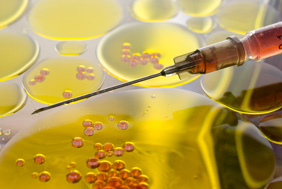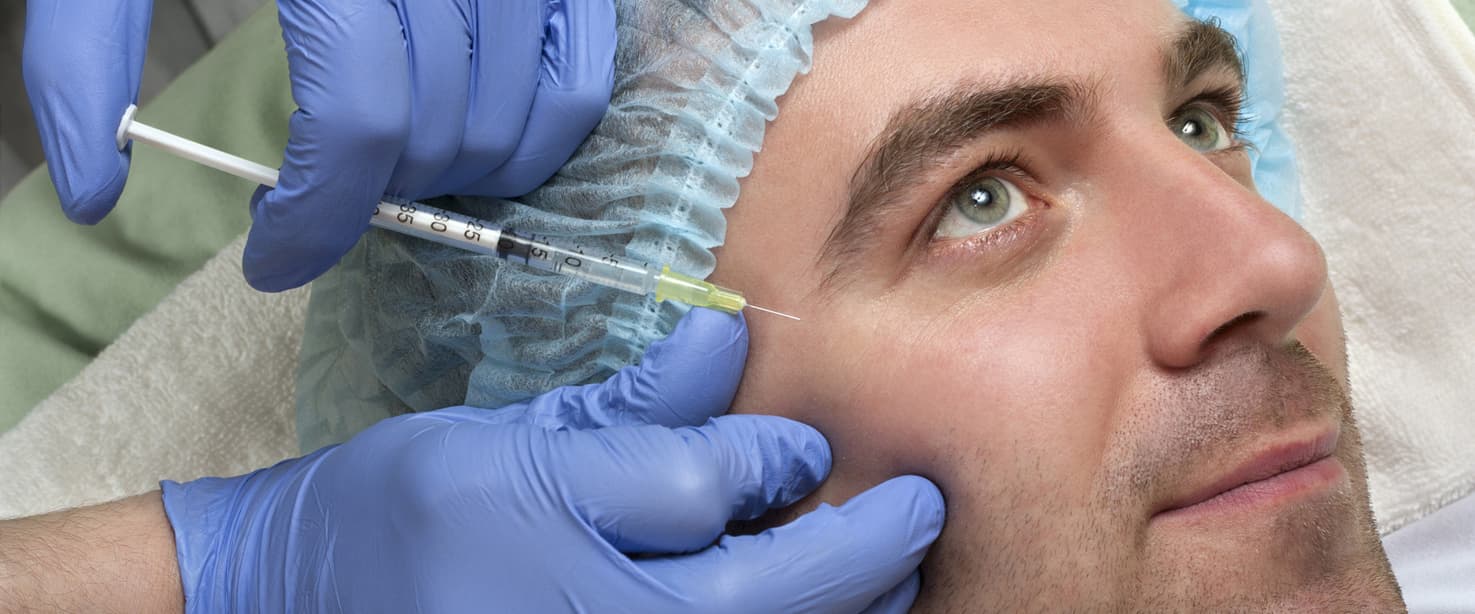Facial aging
Poorly toned skin that shows the signs of aging can undermine our self-esteem: it is not just an aesthetic problem, but also affects the psychological sphere. The most visible consequence of facial skin aging is the loss of volume, that is, localized fat, which also highlights wrinkles and skin imperfections.
The areas of the face most affected by this degenerative process are primarily two:
What may initially appear as sagging of the tissues is actually due to a loss of volume caused by a lack of subcutaneous fat. For this reason, there is no need to “lift” or “pull” the skin of the face with a facelift; it is more effective to fill the hollow areas to restore the youthful appearance of this important part of our image. A now well-established, fast and safe practice for this is lipofilling.
Lipofilling: what is it

While subcutaneous fat in the facial area tends to diminish over time, in the lower parts of our body (hips, abdomen, thighs, etc.) it remains abundantly available. Therefore, the technique of lipofilling involves harvesting fat from areas where it is abundant to restore the lost volume in the face.
The goal is to restore tone, roundness and harmony to the facial features by filling the groove of the upper eyelids, eyebrow area and cheeks. One of the main objectives is to restore brightness and vitality to the eyes, eliminating dark circles and imperfections that emphasize the signs of aging and give an impression of tiredness and neglect.
Compared to commercial fillers, which are done in outpatient settings but require large quantities and are reabsorbed over time, lipofilling has the advantage of much more lasting results and recreates an entirely natural appearance. The effectiveness of this technique has made it one of the most requested in recent years.
Lipofilling: how it is performed
The lipofilling treatment is performed in an operating room, in a sterile environment and under anesthesia. With a small cannula, fat is harvested from the donor site (abdomen, thighs or hips); only small amounts are removed, proportional to the amount to be implanted.
The aspirated fat is processed to remove excess fluids (blood, anesthetic, etc.) and then injected, again with very fine needles, into the superficial layer of the skin to be treated. The areas concerned are under the eyes (dark circles, cheeks, cheekbones) and around them (eyebrows, temples, forehead and upper eyelid). In men, the most requested procedures are for the cheeks and the folds that run from the nose around the lips.

The fat is distributed evenly to avoid build-up in areas of the face that until recently were considered too delicate to treat safely. Most importantly, the unnatural “prosthesis” effect of traditional methods is avoided and the result is a full and youthful face.
In most cases, a single session is sufficient, with a possible touch-up after a couple of years.
SEFFI: the evolution of lipofilling
The evolution of lipofilling is called SEFFI (Superficial Enhanced Fluid Fat Injection) and is an entirely Italian discovery, recognized by publication in the most prestigious American scientific journals.
What makes SEFFI revolutionary is the fact that with this procedure, the harvested fat is treated in a special way so that the stem cells it contains (ADSCs) are not altered and are enriched with plasma (PRP) during the implantation phase.

SEFFI allows the use of very thin cannulas (less than 2 mm, with 0.5 mm holes) and a smaller volume of fat, injected superficially. The longevity of the results is also significantly increased because the stem cells continue to produce benefits over time.
But the most important aspect of this new technique is that it is a true skin regeneration therapy, resulting in skin that looks more toned, luminous and healthy. This combines the filling effect for the relaxed areas of the face with a regenerating effect on the skin, without leaving scars like an invasive facelift would.
SEFFI: side effects and contraindications
Preparation for the procedure is very important and must be entrusted to experienced doctors who will conduct a thorough clinical evaluation and if necessary, some lab tests.
The operation is performed under local anesthesia and the patient can return home a few hours later and resume normal work activities within 3 days. It is necessary to avoid taking anti-inflammatory drugs at least 2 weeks before treatment, as they affect blood clotting. It is preferable to abstain from smoking one month before and two months after the procedure, as smoking impairs microcirculation and may hinder fat integration. Prolonged sun exposure is also discouraged during the following month.
In the postoperative phase, some discomfort may be experienced due to mild swelling in the treated areas. Small bruises and ecchymoses are normal but will resolve in a few days. There is no risk of rejection or allergy, as the injected material is harvested from the patient.
Innovative techniques at your fingertips!

The characteristics of lipofilling with stem cells that I have described make it a treatment with great potential for achieving optimal results in facial aesthetics.
I would be pleased to explain all the advantages of this cutting-edge facial rejuvenation and regeneration treatment to you in my clinic.
© All rights reserved
Patient Reviews:
“Finally a definitive treatment to restore youth to my face marked by time and fatigue! After so long, I regained firm skin and a perfect oval…”
Clara, 38 years old
“That tired and aged expression, which made me constantly uncomfortable in public, is finally gone (…) I recommend stem cell lipofilling to everyone who wants to feel young and attractive again.”
Orietta, 40 years old
“This year I underwent a lipofilling treatment with stem cells. The procedure and postoperative period were not painful at all and the results left me speechless. Youth can be reclaimed even at my age.”
Sandra, 42 years old


